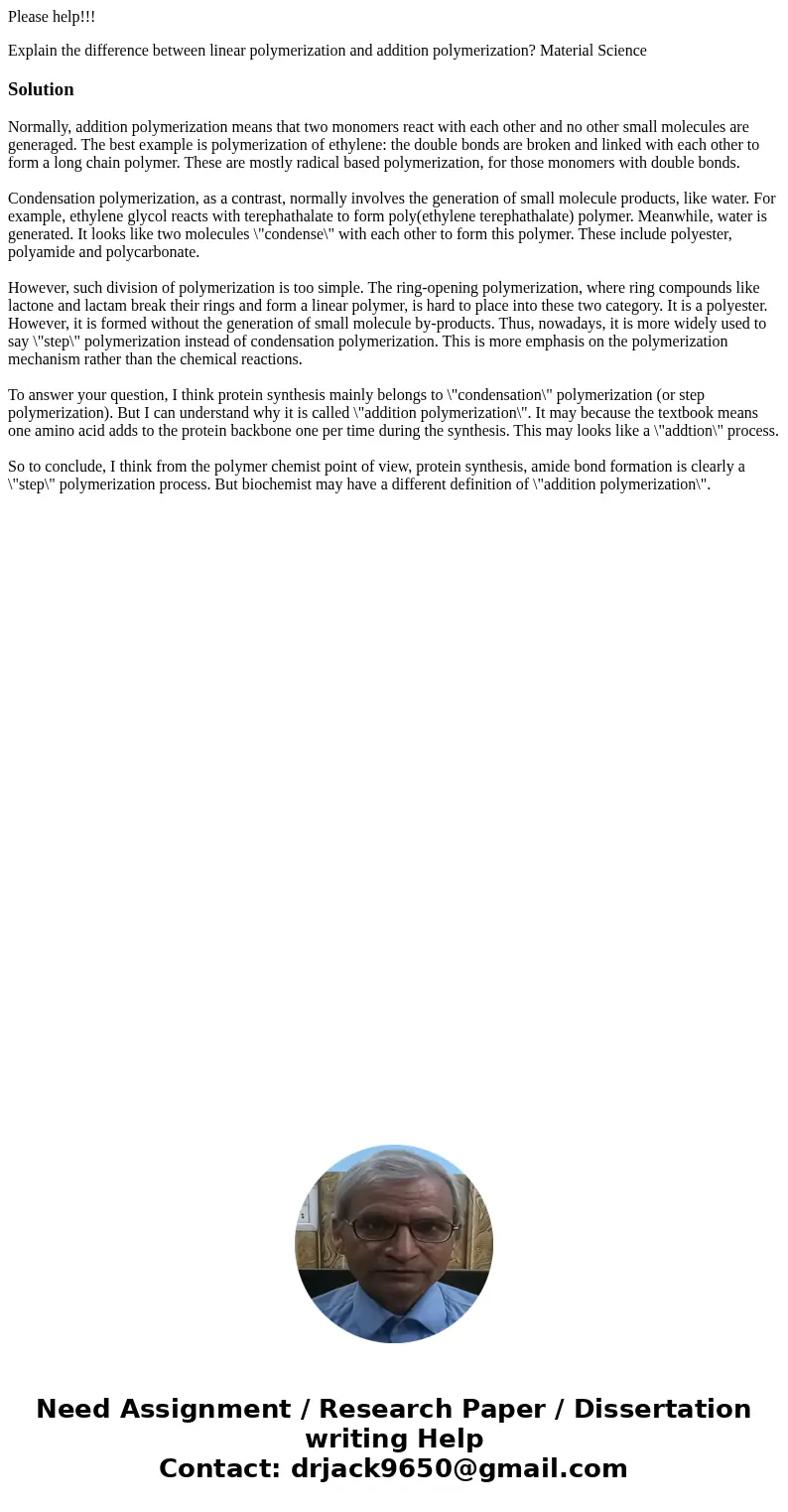Please help Explain the difference between linear polymeriza
Please help!!!
Explain the difference between linear polymerization and addition polymerization? Material Science
Solution
Normally, addition polymerization means that two monomers react with each other and no other small molecules are generaged. The best example is polymerization of ethylene: the double bonds are broken and linked with each other to form a long chain polymer. These are mostly radical based polymerization, for those monomers with double bonds.
Condensation polymerization, as a contrast, normally involves the generation of small molecule products, like water. For example, ethylene glycol reacts with terephathalate to form poly(ethylene terephathalate) polymer. Meanwhile, water is generated. It looks like two molecules \"condense\" with each other to form this polymer. These include polyester, polyamide and polycarbonate.
However, such division of polymerization is too simple. The ring-opening polymerization, where ring compounds like lactone and lactam break their rings and form a linear polymer, is hard to place into these two category. It is a polyester. However, it is formed without the generation of small molecule by-products. Thus, nowadays, it is more widely used to say \"step\" polymerization instead of condensation polymerization. This is more emphasis on the polymerization mechanism rather than the chemical reactions.
To answer your question, I think protein synthesis mainly belongs to \"condensation\" polymerization (or step polymerization). But I can understand why it is called \"addition polymerization\". It may because the textbook means one amino acid adds to the protein backbone one per time during the synthesis. This may looks like a \"addtion\" process.
So to conclude, I think from the polymer chemist point of view, protein synthesis, amide bond formation is clearly a \"step\" polymerization process. But biochemist may have a different definition of \"addition polymerization\".

 Homework Sourse
Homework Sourse